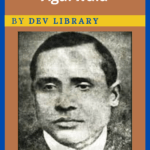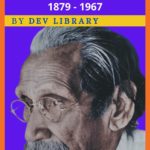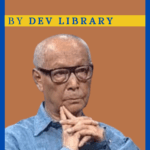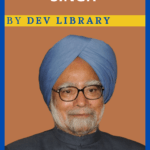The Indian liberated people from British rule were determined to bring the country out of the shackles of subjugation. Subhas Chandra Bose is one of the people who tried to tear the shackles of subjugation. Bose is a legendary man from India who has attempted to liberate India from British rule in collaboration with Nazi Germany and Japan. Subhas Chandra Bose was a great man for India’s independence.

Biography of Subhash Chandra Bose
| Name | Subhas Chandra Bose[1] |
| Date of Birth | January 23, 1897 |
| Place of Birth | Cuttack, Orissa |
| Parents | Janakinath Basu (Father), Prabhavati Devi (Mother) |
| Education | 1/ Protstant European School 2/ Rewenshaw Collegiate School 3/ Presidency College 4/ Scottish Church College, University of Calcutta 5/ Fitz William College, Cambridge |
Early Life
Subhas Chandra Bose was born on January 23, 1897 in Cuttack, Orissa Division,(Bengal province). His father Janakinath Basu was a famous lawyer from Cuttack town in Odisha. Subhas Chandra Bose’s mother’s name was Prabhavati Devi. Subhas Chandra Bose was the ninth of the 14 children of Janakinath Bose and Prabhavati Devi.
Subhash Chandra Bose started his education at The Protestant European School now ‘Stewart High School’ in Cuttack city in 1902. After studying in this school run by Baptist Mission till 1909 Subhash Chandra Bose enrolled in Ravenshaw collegiate school. Very talented student Bose passed the entrance examination by second position in 1913 and enrolled in presidency college. At the age of 16, Subhas Chandra Bose became interested in the philosophy of Swami Vivekananda and Ramakrishna Paramahamsa.
Importantly, Subhas Chandra Bose was expelled from presidency college for opposing prof. Oaten’s derogatory remarks towards Indians in a classroom while studying in presidency college. In fact Bose was a nationalist thinker since then. After his expulsion from Presidency College, Subhas Chandra Bose enrolled in the Scottish Church college of Calcutta University and in 1918, Bose graduated in philosophy and moved to England in 1919 and graduated with a master’s degree at Fitz William College, Cambridge.
Importantly Subhas Chandra Bose passed the Indian Civil Services Examination with fourth position in 1920. But he resigned as the Indian Civil Service in 1921 after refusing to work under the British. And he returned to India from foreign.
Also Read : Biography of Tarun Gogoi
Subhas Chandra Bose as a Protester
Subhas Chandra Bose took over the campaign of The Bengal Provincial Congress Committee in 1921, returning to India from abroad, actively participating in Mahatma Gandhi’s Non-Cooperation Movement and launching a newspaper called “Swaraj.” Bose was subsequently elected as president of The Nikhil Bharat Yuva Congress (All India Youth Congress) and secretary of the Bengal Pradesh Congress (Bengal State Congress) in 1923. And it was during this time that Bose developed a cordial relationship with Chittaranjan Das, the spokesperson of the radical nationalism of Bengal. Importantly, he also served as editor of the newspaper “Forward” started by Chittaranjan Das.
Later, during the British campaign against nationalists, Subhas Chandra Bose was also arrested and sent to jail in 1925. After his release from jail, Bose took over as general secretary of the Congress party in 1927 and played an active role in India’s freedom movement. As general secretary of the Congress party he convened the annual session of the Indian National Congress in Kolkata in December 1928. Subhas Chandra Bose as General Officer Commanding (GOC) of Congress Volunteer Corps made an outstanding contribution to the Congress party as well as the Freedom Movement of India.
But after 1925, Bose was again arrested and sent to jail for violation of law. And Subhas Chandra Bose was elected Mayor from Kolkata in 1930 after his release from jail. Importantly, in the mid-1930s, Bose researched a book called ‘The Indian Struggle’ covering various aspects of India’s independence movement from 1920 to1934. But the book, published in London in1935, was banned by the British administration.
Subhas Chandra Bose stood up for “Swaraj” (self-governance) for India’s independence but also advocated violence against the British. Which led to his disagreement with Mahatma Gandhi who was determined to bring about India’s independence with non-violent policies. This resulted in a rift in the Indian National Congress party. And Subhas Chandra Bose resigned from the Congress at the end of various incidents.
After resigning from the Congress, Bose formed a new party called Forward Block.
Importantly, in 1940, after the formation of the Forward Block, the English authorities again arrested Subhas Chandra Bose through the Security Act, but importantly, he was under house arrest at that time due to deteriorating physical health.
Formation of Azad Hind Fauj
Bose secretly left India on January 17, 1941 and begged for the help of the Soviet Union for India’s independence from the time he was under house arrest advocating an armed struggle instead of non-violent policies against the British as the freedom struggle led by Mahatma Gandhi did not succeed till then. But in the wake of the Soviet Union supporting the British, Bose traveled to Berlin, Germany’s capital, and formed an army with Indian prisoners of war with Hitler’s support.
But in late 1941, Japan declared war on England and the United States. And at that time, Bose, one of the revolutionaries of India, was in Japan. Bose organized a grand rally with Indians in Bangkok on June 15, 1942, planning to liberate India with Indians in Southeast Asia and Indian troops held in the hands of Japan.
And as per the proposal of this gathering, He invited Chandra Bose to Southeast Asia. Subsequently, through various discussions and plans, the “Azad Hind Fauj” was formed on September 1, 1942 with the efforts of Bose, Captain Mohan Singh of the Indian Army and the Japanese authorities to liberate India.
Subsequently, on August 25, 1943, Subhas Chandra Bose assumed the post of Azad Hind Fauj, the Supreme Leader of the Indian National Army. Importantly, Subhas Chandra Bose’s powerful and attractive personality was called ‘Netaji’ by all the soldiers irrespective of caste and creed.
The Freedom Struggle
Subhas Chandra Bose divided Azad Hind Fauj into three main forces (Gandhi, Azad and Nehru Forces) and also by organizing women he formed a women’s Commando called Rani Jhansi. Bose had started preparing for India in high speed on October 31,1943 with the slogan ‘Delhi Chalo’ in parallel with announcing the establishment of Azad Hind, the independent Government of India. Subhas Chandra Bose, who was a great man for India’s independence, addressed the people and said “Give me blood; I will give you freedom.”
Bose started the Azad Hind Fauj’s Bharat Abhiyan in January 1944 after establishing the chief military portfolio in Rangoon. The first division of the Azad Hind Fauj attacked British troops at Mordak, a place on the Indian border, in advance with Japanese troops. After winning that attack, the Azad Hind Fauj soon took over Imphal and took over the Entrance scheme in Bengal through Assam. But as the United States moved towards Japan at that time with a huge war, Japanese troops left The Brahmadesh and Azad Hind Fauj was forced to retreat in order to save their homeland.
Death
After fighting for a few days amid the adversity and problems that arose, the Azad Hind Fauj was finally forced to surrender and Netaji Chandra Bose was reportedly said to have died in a plane crash on August 23,1945. But the death of Chandra Bose remained a mystery till now. Till now it is not yet possible to come to an all-out decision about it.
Conclusion
The birth anniversary of Subhas Chandra Bose i.e. January 23 is celebrated as Paraakram Diwas across India. Netaji Subhas Chandra Bose and Azad Hind Fauj, who have contributed immensely to India’s independence, will always shine on the pages of history. Subhas Chandra Bose, who died for Nation Love, will continue to be a source of ideal and inspiration for the younger generation.
FAQ
1. When and where was Subhas Chandra Bose born?
Ans: He was born on January 23, 1897 at Cuttack, Orissa.
2. With what title Bose was Conferred with and when?
Ans: Bose was conferred with the title “Netaji” in 1942.
3. Who gave the Netaji title to Bose?
Ans: In 1942,he earned the title “Netaji”, in Germany by the Indian Sldiers of Azad Hind Fauj.
4. Which are the two popular slogans of Bose?
Ans: The two popular slogans of Bose are – ‘Give me blood, I will give you freedom and ‘Jai Hind’.
5. Why Subhas Chandra Bose is famous?
Ans: Bose is known for his role in India’s independence movement.
6. When do we celebrate Paraakram Diwas across India?
Ans: The birth anniversary of Subhas Chandra Bose i.e. January 23 is celebrated as Paraakram Diwas across India.
7. When did Bose started Azad Hind Fauj?
Ans: Bose started the Azad Hind Fauj’s Bharat Abhiyan in January 1944.

Hi, I’m Dev Kirtonia, Founder & CEO of Dev Library. A website that provides all SCERT, NCERT 3 to 12, and BA, B.com, B.Sc, and Computer Science with Post Graduate Notes & Suggestions, Novel, eBooks, Biography, Quotes, Study Materials, and more.








